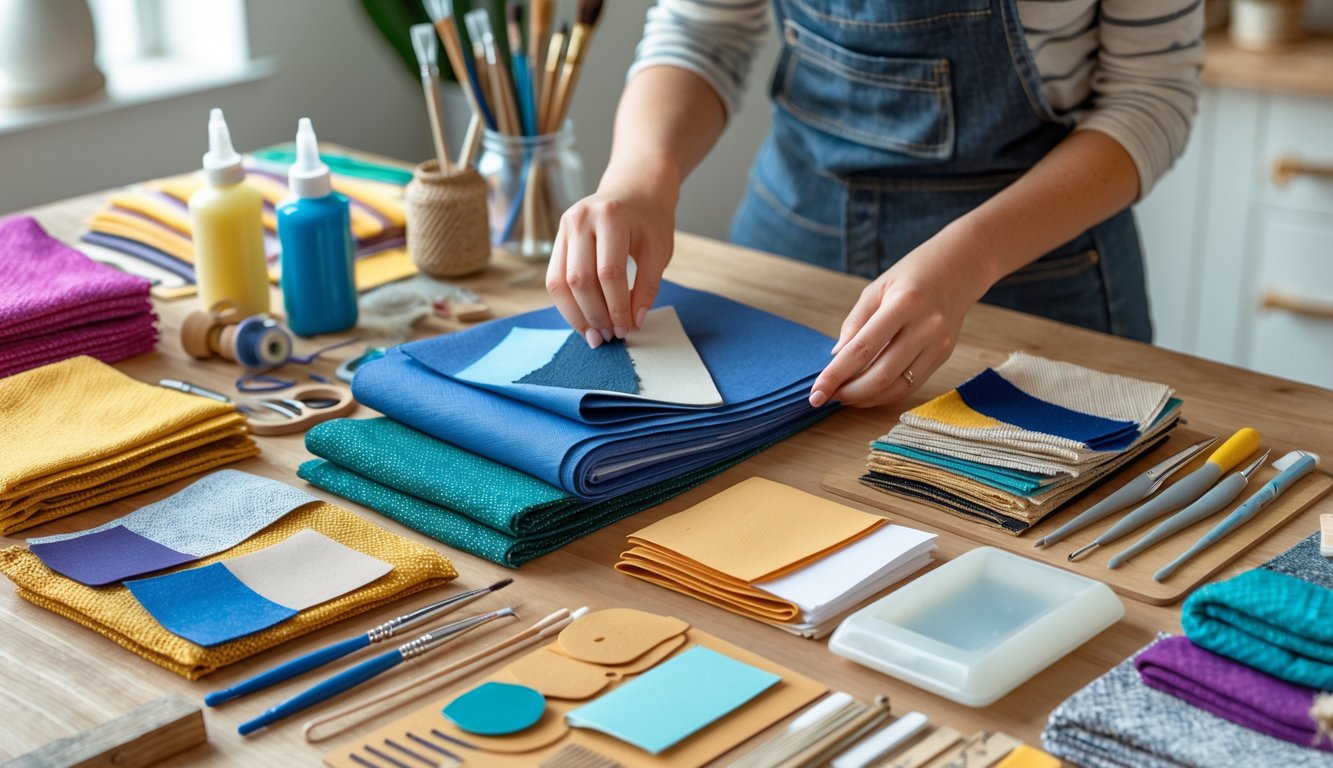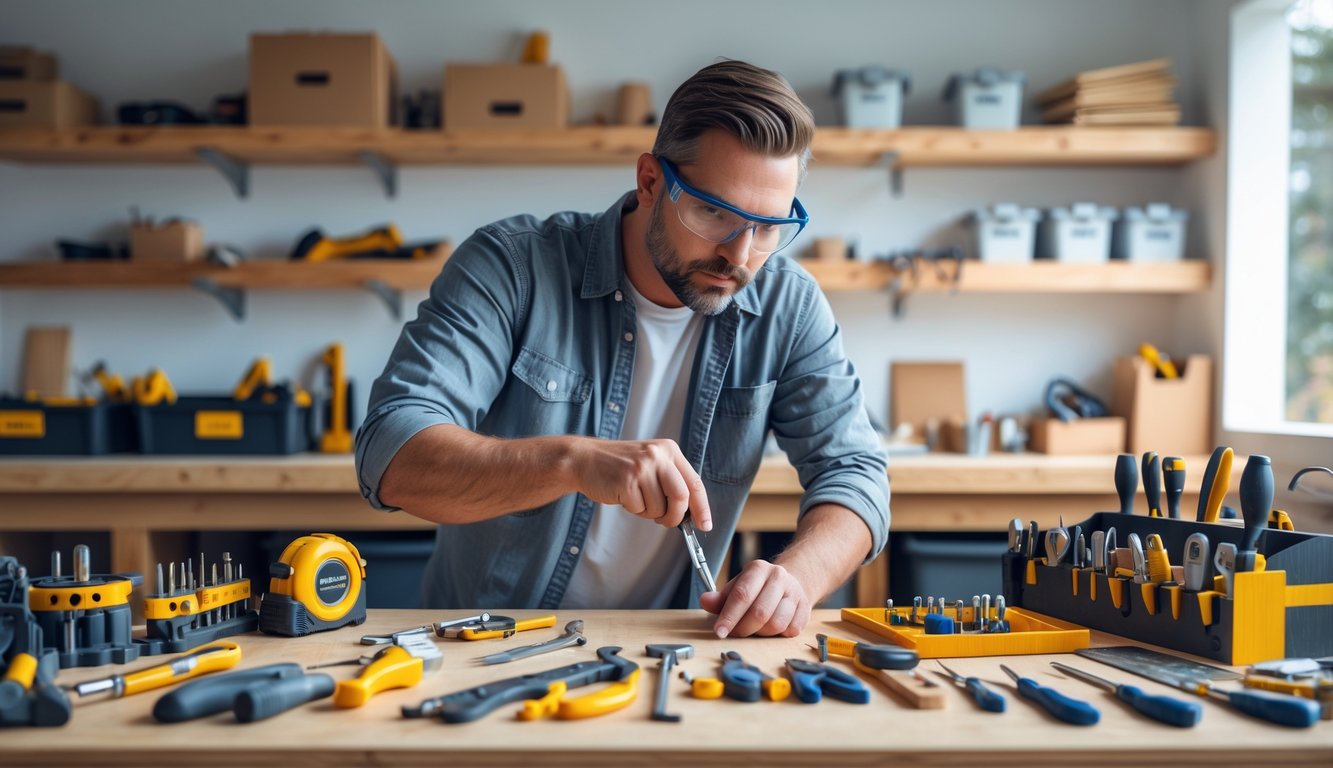
The Importance of Accurate Measuring
Last week—yardstick AWOL, inches versus centimeters, total mess—someone cut their foam board completely wrong because “eyeballing is faster.” Result? Useless board, three crafters questioning reality. The best crafters I know hoard laser measurers and transparent rulers because being off by two millimeters can wreck everything.
It’s not just about straight lines; it’s angles, spacing, even the thickness of a pencil mark. Measure twice, cut once—it’s a cliché, but it’s true. Instructors rant about tape measure calibration, but who actually checks theirs? I did. Mine stretched by a quarter inch after a couple months. Terrifying. DIY veterans swear that a few minutes measuring saves hours of regret and, honestly, a lot of stress.
What Happens When You Skip Steps
It’s just chaos—nothing you’ll learn from, just glue everywhere and pieces that don’t fit. I’ve seen cabinets collapse because someone skipped a stud finder. Flooded pipes, insurance nightmares, the works. Risks multiply when you skip prep: paint peels, glue fails, surfaces warp, and safety gear? Always forgotten, always regretted.
What blows my mind is people think skipping primer saves time. Nope. DIYers tell me they’d rather sand the same board twice than prep once. I still get distracted, miss a step, and curse myself halfway through. Maybe that’s why pros yell, “Follow the instructions!” but after step two, everyone just guesses. It’s a curse—cutting corners means wasting money and cleaning the same mess twice.
Choosing Quality Materials Over Low-Quality Alternatives

Let’s just say it: why do people keep buying bargain glue? Everyone knows it dries weird and peels. Picking craft supplies isn’t about brand names, it’s about not wasting an hour fighting cheap foam that rips or glue that never sets, even if you followed every step perfectly.
Impact of Material Choice on Durability
Can we stop pretending cheap felt is “just as good” as the good stuff? Sew a hem with discount felt, wash it once, and watch it fall apart. I’ve had acrylic paint flake right off a sign after one rainstorm—no, that’s not “character.” Actual studies (yeah, crafters do studies) show quality materials last three to five times longer than bargain-bin junk (see the advice at homegardenliveadviceinc.com/choosing-materials-for-your-diy-project-a-simple-guide). I’m always skeptical when someone claims “it’s all the same,” especially if they’ve never watched a weekend’s work crumble into dust. People rip out cheap siding or wall panels in under five years, but the good stuff? Decades, no extra effort. Try low-grade chipboard in a bathroom, see what happens. Spoiler: disaster. So, nope, not all supplies are created equal—unless you like watching your work fall apart in record time.
Identifying Quality vs. Low-Quality Materials
Supposedly there’s a secret handshake for this—some checklist about “certifications on the packaging” or whatever. But I mean, who actually trusts that? I’ve poked at fabric, sniffed paint (don’t do that, by the way), and still ended up with “premium” yarn unraveling in my hands. Labels are mostly marketing noise. The only halfway decent method I’ve figured out is to just abuse a sample—bend the wire, dunk the felt, try to scrub the canvas with a wet rag and see if it falls apart. Is there some official test for this? Sure, pros whip out moisture meters and UV lamps and run these weird six-week side-by-sides with siding scraps. I watched an insulation guy do it once—honestly, the difference was ridiculous. Also, never pick up those mystery hot glue sticks at the bottom of the bin; some of them just melt if you look at them sideways in the sun. Learned that one the hard way at a brunch. Price tags don’t mean squat, but if a material handles cleaning, weather, or just getting knocked around without turning to mush, that’s the closest thing to “quality” I’ve seen. Online reviews? Mostly garbage fire. But if someone’s done a third-party durability test or the adhesive label actually spells out temperature range and cure time, I’ll at least give it a shot.
Best Practices for Selecting Craft Supplies
I don’t even try to compare if every single “wooden” blank on the shelf weighs less than my phone. If it feels like plastic, smells weird, or is weirdly greasy, back it goes. I’ll check weight, smell, country of origin—sometimes I just stare at a label, wondering if it’s even real wood. Only a handful of brands actually keep their quality up, which is wild. I get the urge to buy the cheap multipacks, but honestly, the cost of fixing mistakes or replacing junk adds up way faster. hometoolzone.com’s guide to choosing materials basically says just spend the extra up front. I hoard the stuff that works: 100% cotton thread, acid-free cardstock, solid-core foam—yeah, they cost more, but I’ve never been embarrassed by them. If a new supply fails my “real life” test (mud, sunlight, dog tug-of-war), I ban it forever. Oh, and I once tried garden ties for a wall hanging—disaster, woke up to a knotty mess. Now I triple-check blends and warranty details, and only trust things that have already survived my chaos. That’s not paranoia. That’s just learning after “washable” dye ruined my washer and three towels.
Selecting the Right Tools for Every Project

Missing a tool—always something tiny—turns my whole table into a disaster. You’d think after years I’d have it down, but nope. Even pros screw up. It’s wild how much tool choices matter, especially with sneaky stuff like how a dull blade can wreck a whole batch of fabric.
Essential Tools Every Crafter Needs
People show up with the weirdest gadgets—glue guns, pliers, sometimes a power drill, like they’re building a spaceship. But the stuff that actually saves my sanity? A self-healing mat (RIP to my kitchen counter), titanium scissors that don’t go dull in a week, and a real cordless drill for furniture and wall art. Lists online with “17 essential tools”—yeah, right. I’ve never made it through a project without a utility knife and a legit metal ruler. Craft knives (the solid ones, not those bendy plastic nightmares) get more use than my glue gun. And honestly, why does everyone forget safety glasses? Flying needle tips are real.
If you’re just starting, maybe skip the specialty stuff, but even a bone folder for folds or a rotary cutter for fabric (unless you like ragged edges?) is a game changer. The pros keep these right on top, not buried under vinyl scraps.



